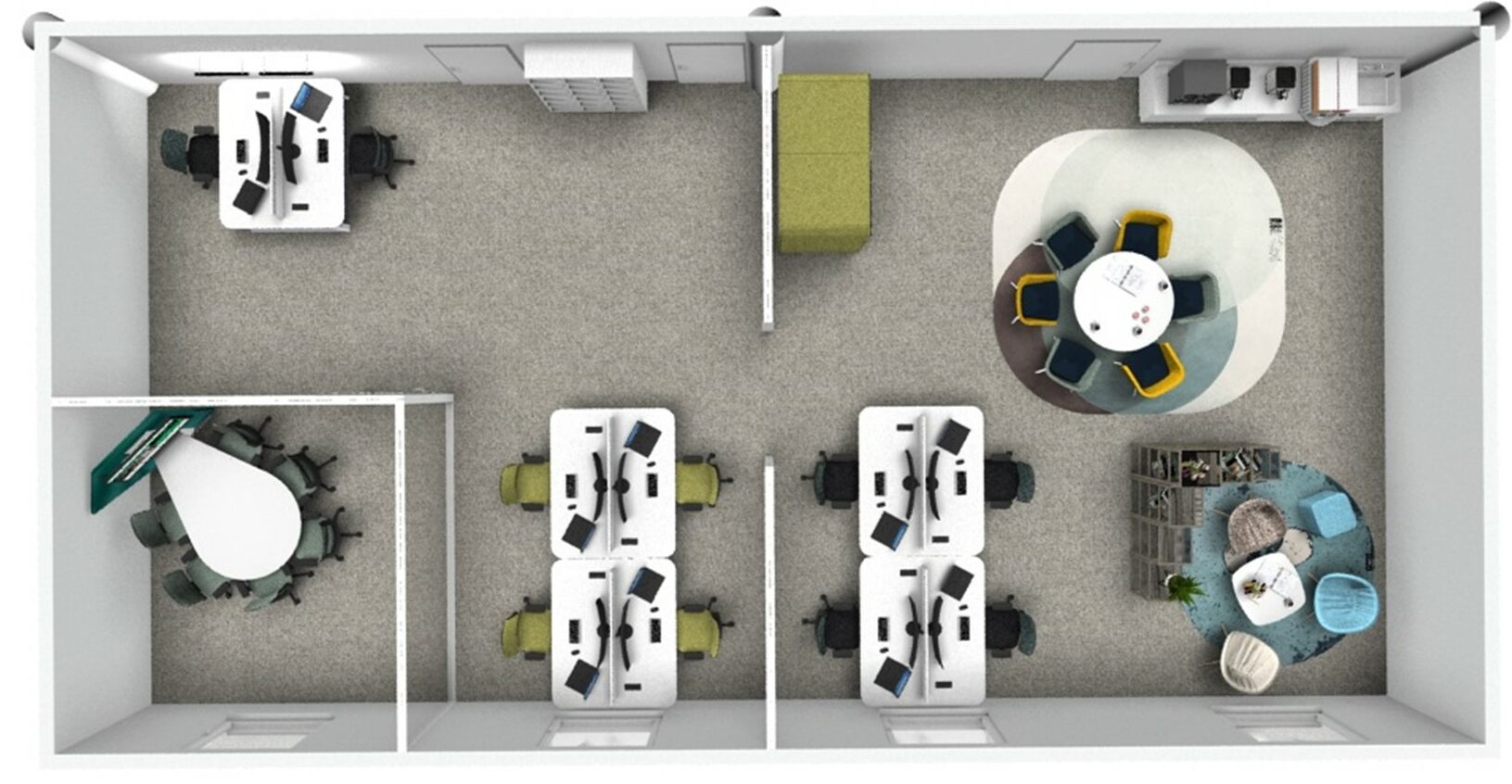
60/40 Hybrid Working & Office Spaces

The Covid-19 pandemic created a situation where a large proportion of our population could not safely attend their regular work places.
The instruction issued by our leaders was simple, if you can work from home you should. For those that could, this meant that employers had to quickly adopt home-working for their staff in order to stay open and for a time this became a part of the ‘new normal’. As a result of fluctuating infection rates the easing and tightening of restrictions has meant companies have had to learn to be much more flexible in terms of where their employees operate from.
Now over a year on from the original UK lock-down there has been a gradual return of staff to the offices that were once the hub of their working lives. But a great deal has changed and upon returning into the office not only employees, but employers have realised that indeed there are certain benefits to utilising a flexible workforce. Such benefits include as reduced physical overheads i.e. rent and facilities, improved attendance, better employee retention and increased productivity.
What is a hybrid work model?
Throughout the pandemic people have proven the ability to be productive while working from home and because of this and the clear benefits remote working can offer both employers and their workforce, many companies have begun utilising a hybrid work model. This model of working affords employees the choice in the working location that best fits their own as well as the business’s needs. The 60/40 Hybrid model refers to the split between working in the office (60%) and at home (40%). over a 5 day working week this equates to 3 days office based working with 2 days spent working from home.
For guidance on what your obligations as an employer are for home working you can visit The Health and Safety Executive’s website and Gov.uk.
What is a hybrid office space?
To achieve this model, the design of the office is changing. There is a shift away from workplace density and a move towards open plan spaces with hot-desks where any employee can sit down log-on and access their work.
Allocating fewer workstations to individuals frees up space that can be repurposed for a wider variety of collaborative spaces. Collaborative spaces allow you to leverage the office as a place for culture, connection, community-building, and innovation.
The next step is to deliver an open office that also supports increased video conferencing and allows your workforce to seamlessly connect with each other no matter the location. This should include any hot-desks, meeting rooms and collaborative spaces.
Greater flexibility requires better planning and a substantial effort to preserve cohesion amongst team members when teams are no longer fixed to a location or schedule. Understanding how in-office attendance may shift over the course of the week is important. Practically for teams, the hybrid workplace may present the additional effort of organising times to be in the office together.
We would love to hear your thoughts and discuss the challenges that the ‘new normal’ and hybrid working model presents your business.
To take advantage of Dalen Design Concepts manufacturing and technology integration expertise drop us a line on +44 (0) 0121 508 4350or alternatively e-mail us at enquiries@dalendesigns.co.uk.
